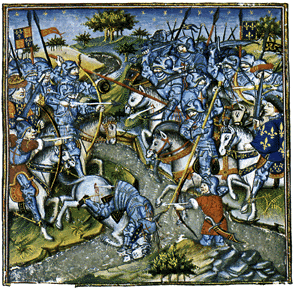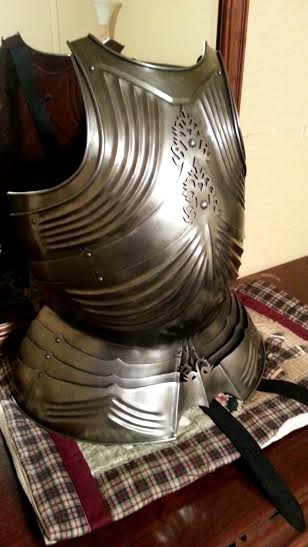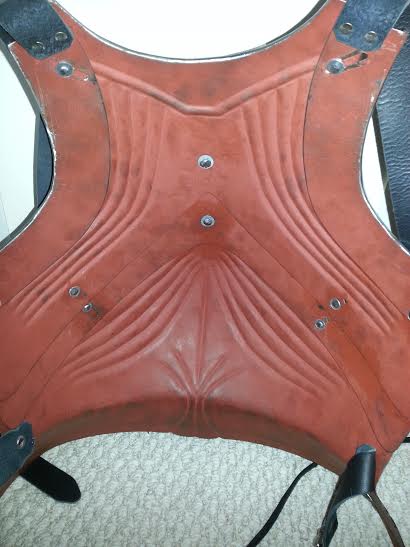Thanks!
I can see how a man in plate armor can still shoot a bow on a horse while moving.


My new new front German Gothic plate armor. 1.2 mm of high carbon harden Steel


| Craig Peters wrote: |
| Do you mean the faulds? http://en.m.wikipedia.org/wiki/Faulds_%28armour%29
Yes, it's historically accurate. See here for examples: http://myArmoury.com/talk/viewtopic.php?t=214...ght=extant |
| Pieter B. wrote: |
| I believe so.
The faulds tend to start quite near to the navel which means only your upper chest can't move. However since that space is filled with a rib cage you won't do much flexing there anyway. |
| Lafayette C Curtis wrote: |
| Google up "sliding rivets." It's a perfectly normal feature in 15th-century armour. Your breastplate might have more of them than what would have been typical for its time, but not to the extent of being unrealistic or ahistorical. |

| Quote: |
| I can see how a man in plate armor can still shoot a bow on a horse while moving. |
| Pieter B. wrote: |
| The famed sigismund of tyrol armor does show rivets on the outside (like this reproduction). Can anyone confirm they are stationary non-sliding rivets?
[ Linked Image ] [ Linked Image ] |
| Edward Lee wrote: |
| Gerald
That's a really nice breastplate, who made it though? Thanks |
| Gerald Fa. wrote: | ||
Oh no, My armor is the one from the very top, it is heavily based on this one, in fact it is the same but with out the bras and not very polished. |